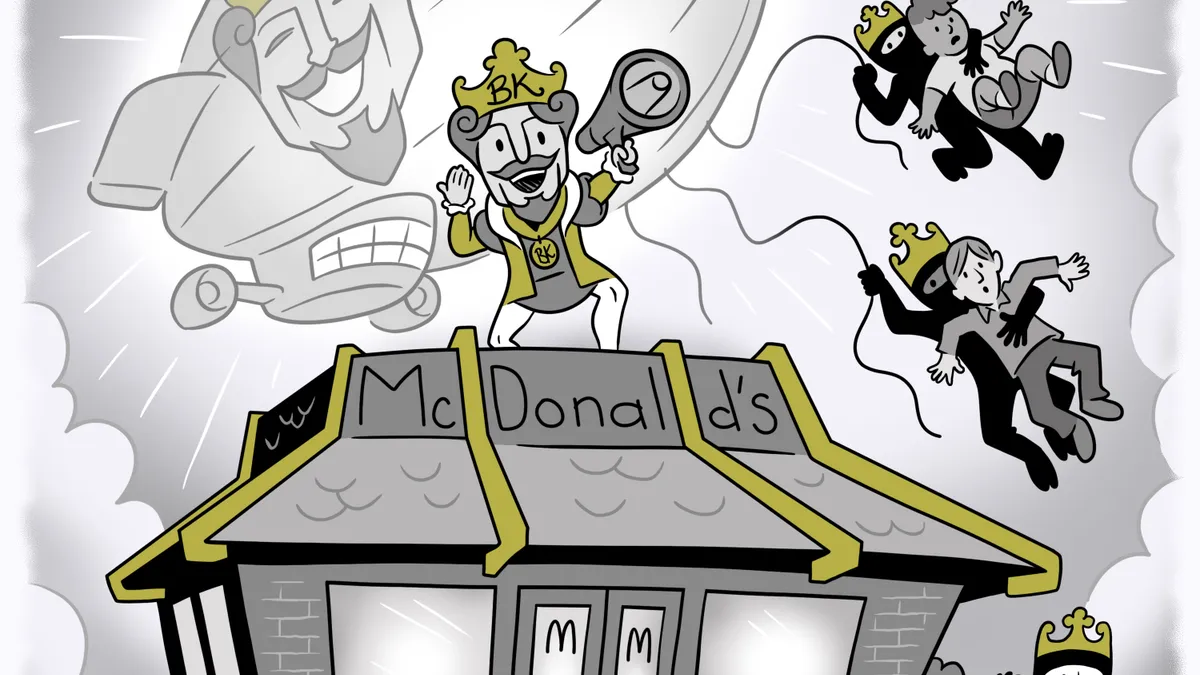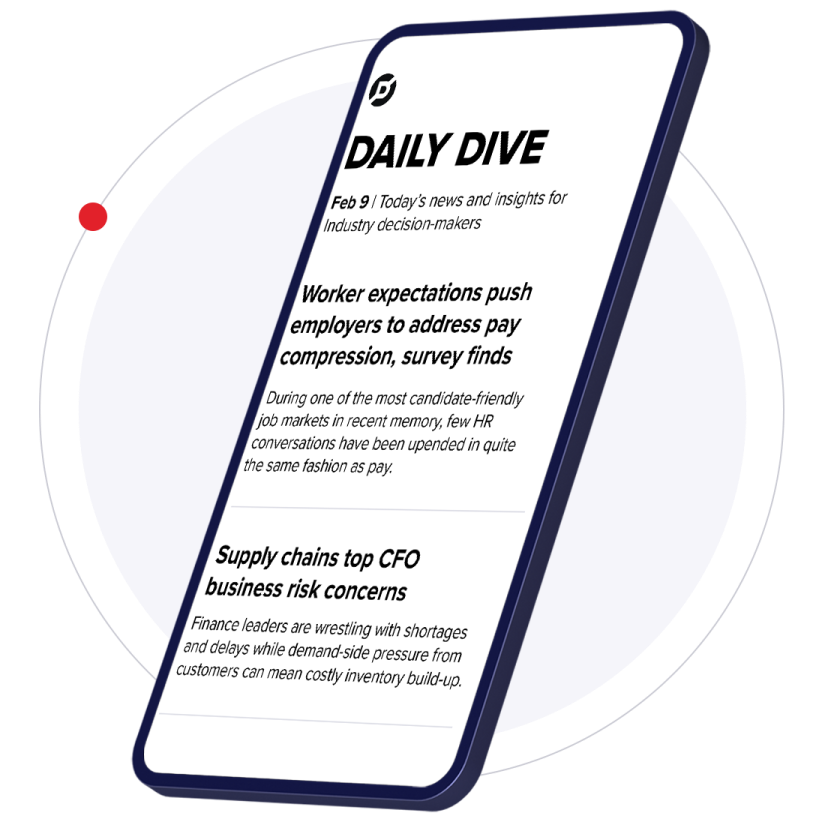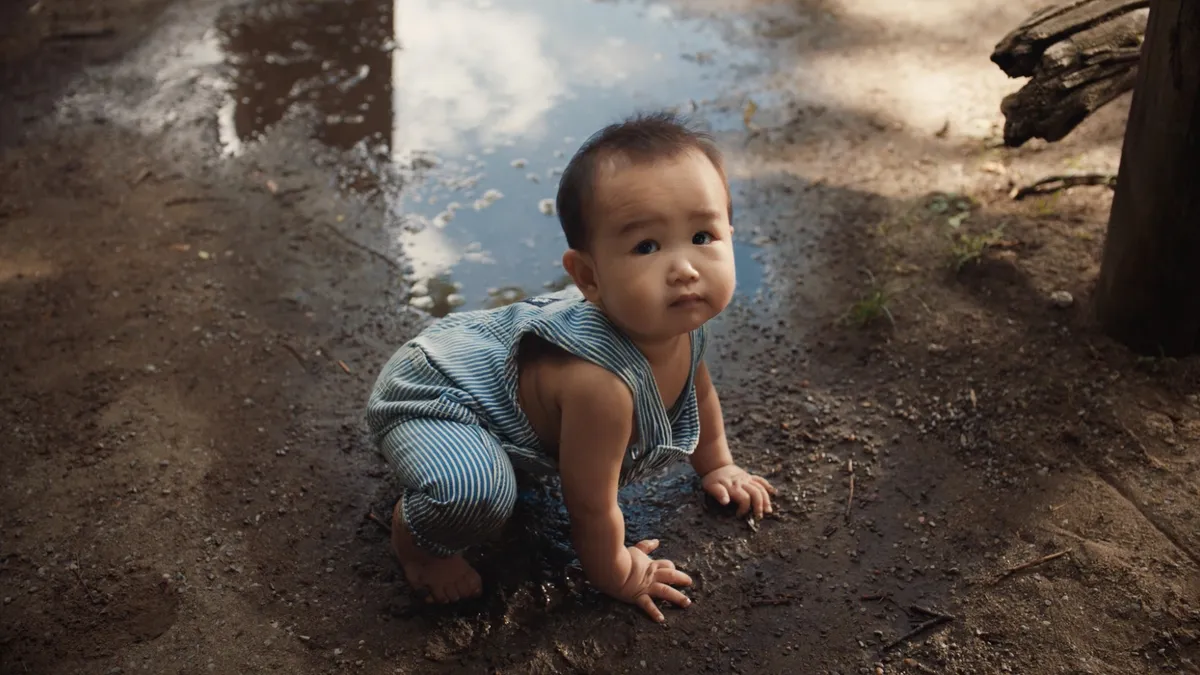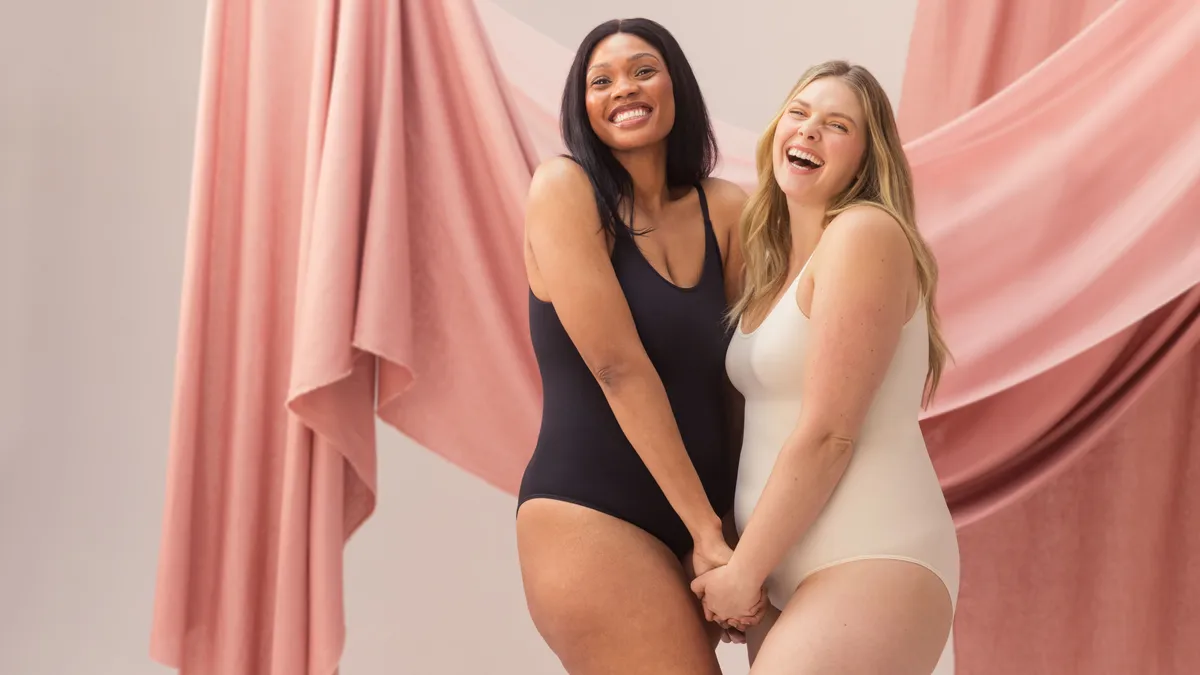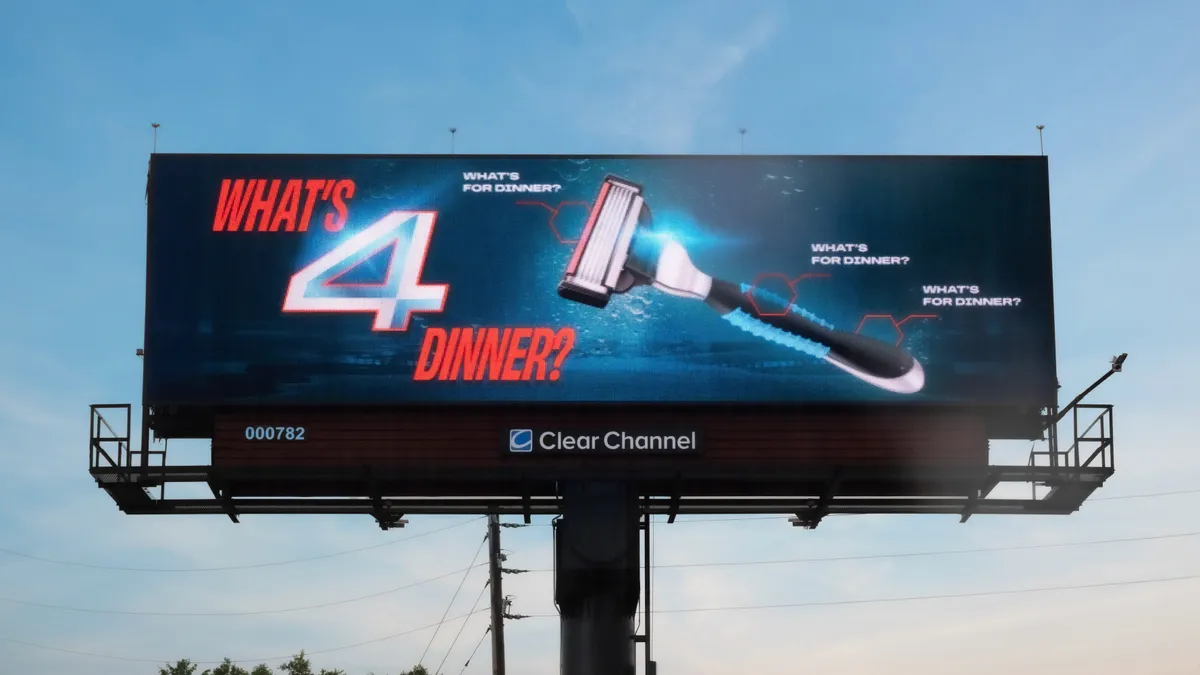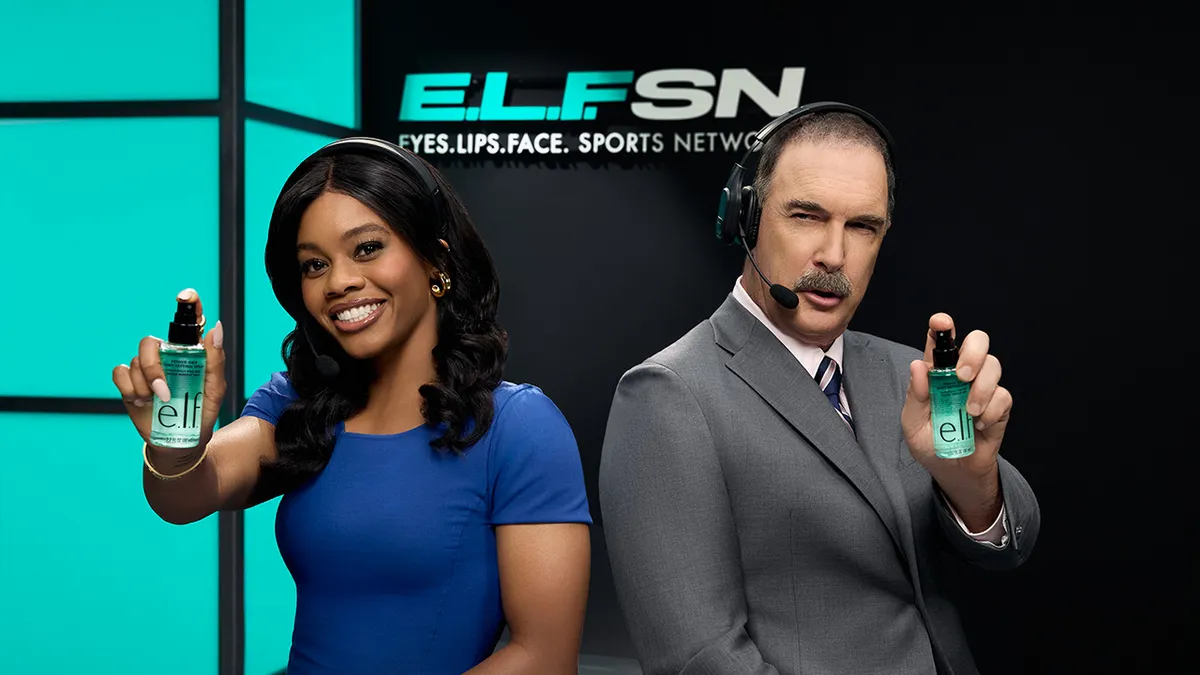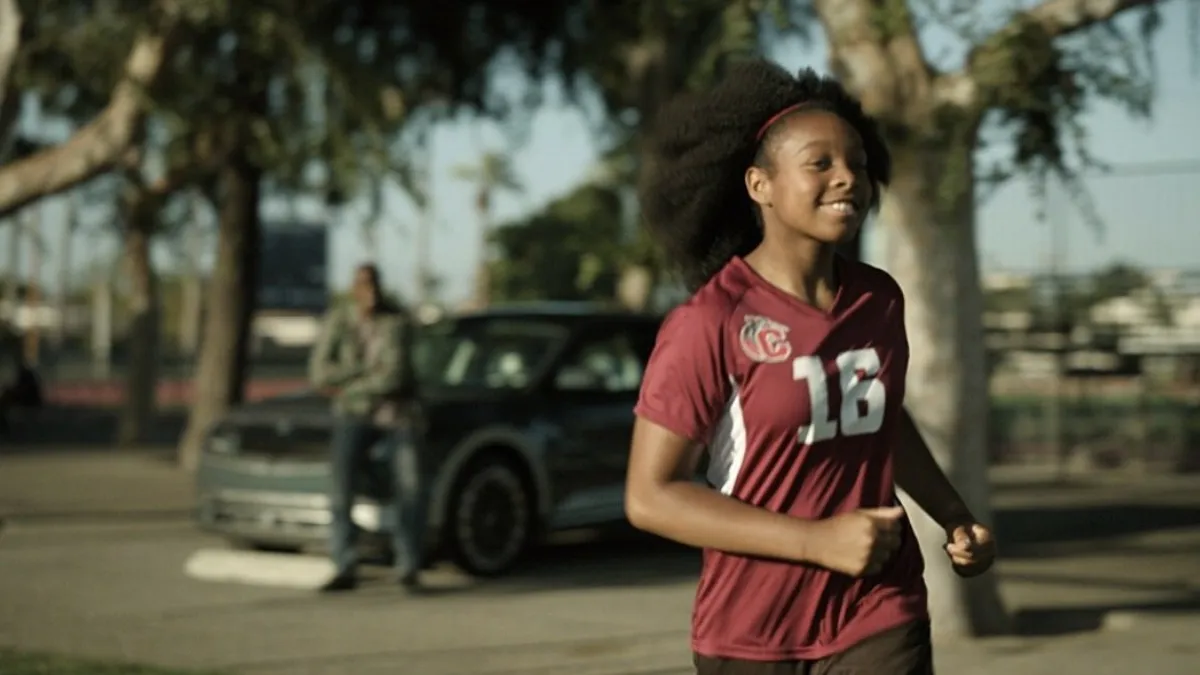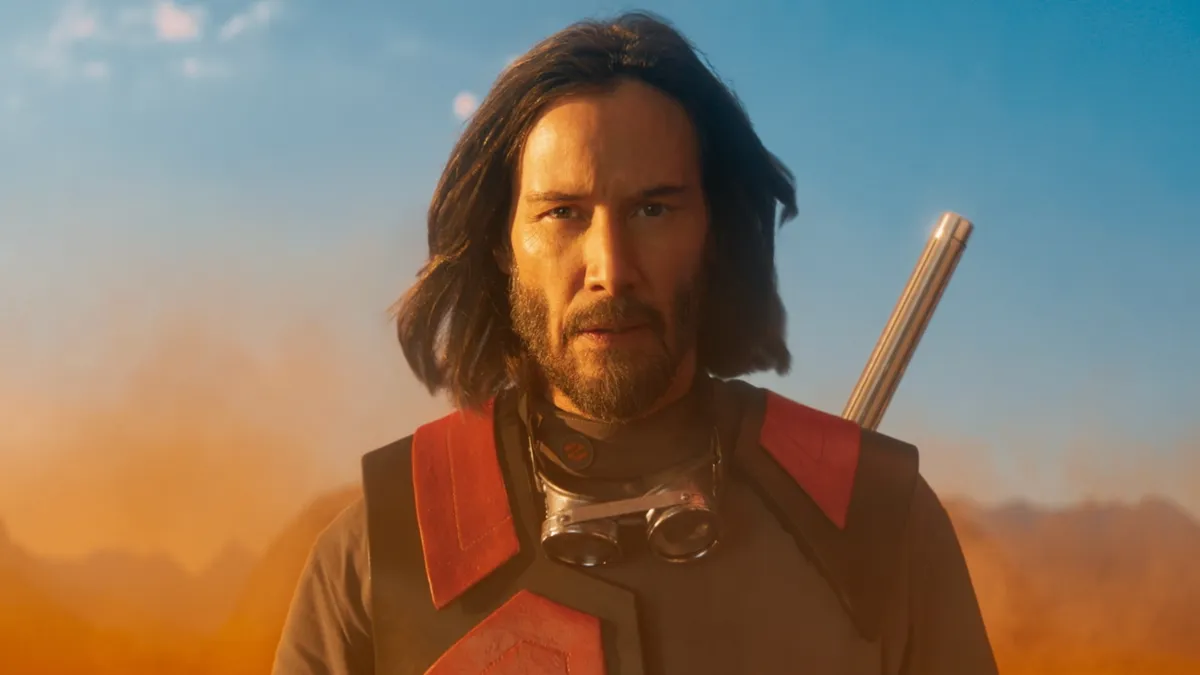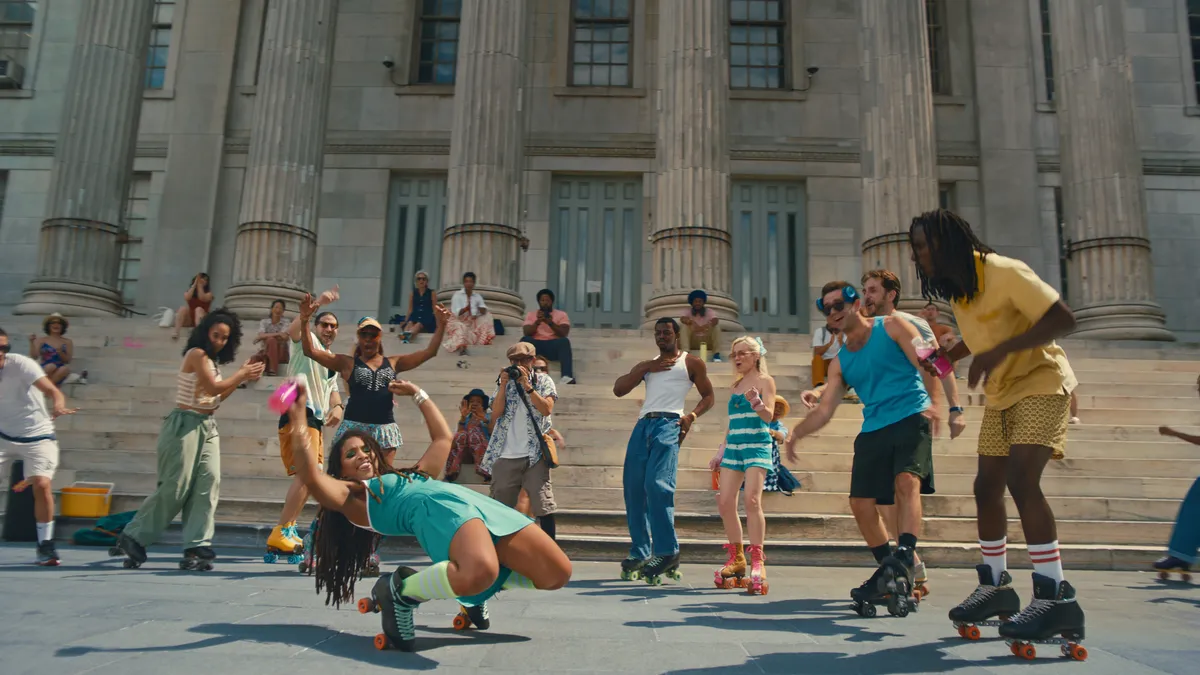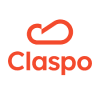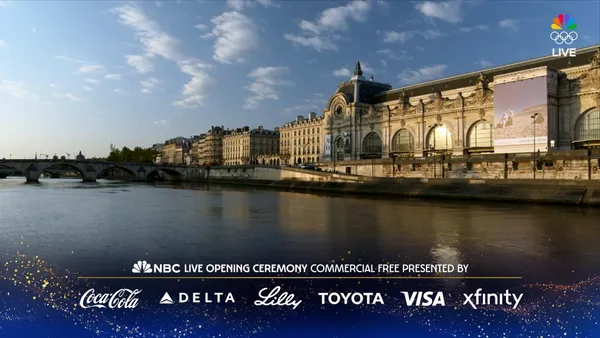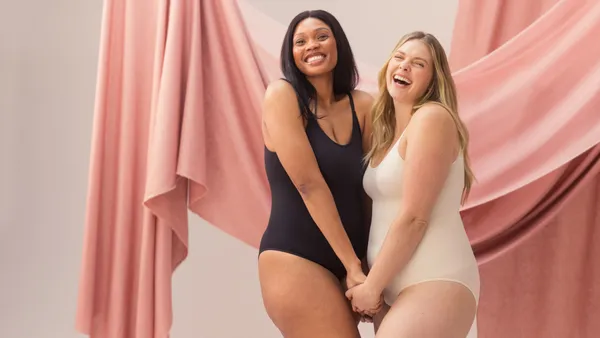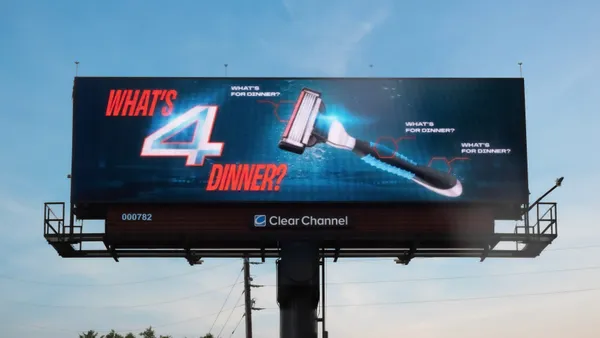For the past few years, quick service restaurant (QSR) brand marketing has been about snark, disruption, hijacking each other's campaigns and sparring on social media. Amid significant competition in the category, sales pressure from fast-casual concepts, changing consumer tastes and the explosion of social media, QSRs have regularly resorted to aggressive tactics to break through cluttered communication channels.
But with the coronavirus pandemic causing a significant evolution in consumer needs and forcing marketers to change tactics — if not stop advertising altogether — the time for the usual approach is over, and might never return, according to several industry executives interviewed for this story.
Yet brand messaging will continue, especially with QSRs ramping up marketing as stay-at-home orders ease around the world. A leader in QSR marketing, McDonald's, is set to ramp up its spending on U.S. marketing by an estimated $100 million and a similar amount in several of its largest international markets. However, the question remains: What will marketing look and sound like after the COVID-19 era for these and other brands? Some of the ways QSR marketing will evolve have started to reveal themselves — like a bigger focus on hyperlocal efforts and building virtual communities — while others are likely to crop up in the months ahead.
"The vast majority of consumers don't want any negativity or snark from brands," Stacy DeBroff, CEO and founder of Influence Central, told Marketing Dive.
Only 21% of consumers welcome any brand attempts at lightening the situation with humor or comedic relief, according to a 700-person consumer insights panel run by Influence Central. At the same time, brands are wary of being seen as insensitive to the current moment.
"Brands want to be in the conversation, but they don't want to become the conversation," DeBroff said.
QSR marketing has already shifted
Marketing in the category has already changed during the pandemic's first few months. Notably, KFC in March pulled its latest "Finger Lickin' Good" campaign in the U.K. amid coronavirus concerns of hand hygiene. By May, the chain had pivoted to a virtual Mother's Day experience on Facebook Messenger that helped people celebrate while social distancing.
"We have definitely seen that QSR brands have moved away from snark and disruption during this time of crisis, and we've started to see this with public service and corporate social responsibility campaigns and efforts," Todd Grossman, Talkwalker CEO, told Marketing Dive.
"Recent conversations have featured themes of love and serving the community, and this approach seems to be working in terms of higher engagement and positive sentiment, which has increased over the past two months," he added. KFC, Wendy's and Chick-fil-A have all seen increasingly positive sentiments.
"I think the data points are proving that during the COVID pandemic and then during what life looks like afterwards, we don't see it going back to sort of a snarkiness," John Holdridge, General Manager at social content company Fullscreen, told Marketing Dive.
Instead, he explained, QSRs have started to focus on three things that feel really relevant for today and tomorrow: health and safety of workers and consumers; food quality, especially with concerns around outbreaks at meat factories; and an emotionality and lighter tone based on the widespread impact of the pandemic.
"I do think the tone [for QSRs] will be less infighting with each other and more optimistic messaging to the consumer," he added.
For example, Burger King has changed its visual signage to a message of togetherness, and the chain offers an instructive example, Holdridge said.
"They've had multiple dimensions of marketing the Whopper, but at the end of the day, they're marketing the Whopper. Their endgame is that sandwich," Holdridge explained. "They're not deviating from the fact that at the end of the day, they're just a QSR. I think that's really, really relevant right now. To me, that has that authenticity, relatability and that element of normalcy that people are looking for in their marketing messages."
More hyperlocal approaches
Marketing will continue to evolve as the approach to dealing with the pandemic changes, especially as QSRs are subject to sales losses as a result of stay-at-home orders and dining room closures, which may be intermittently relaxed in the months ahead.
"The geographic areas are going to open unevenly — they might close down based on outbreaks — and so I think that hyperlocalized marketing is going to rise over national [QSR] brand campaigns," DeBroff said.
The preexisting tug-of-war between national brand marketing and individual franchisee marketing will only be exacerbated as restaurants look to avoid brand confusion across geographic regions. This could lead to a lift in localized digital spends and engaging local social media influencers, according to DeBroff.
"I think that you're going to see a move to much more hyperlocal marketing where what we've seen before versus just the national brands really focusing on owning that marketing voice," she said.
"We're not going to get back to normal life anytime soon."

John Holdridge
Fullscreen, general manager
As consumers' daily lives change, there might also be an opportunity for QSRs to reach people separate from the evolving dining, delivery or takeout situation. McDonald's Belgium created a 500-piece Burger Puzzle as it looked to engage with fans who are increasingly playing with puzzles while stuck at home. Similar efforts could revolve around all types of gaming, as Wendy's has done with "Fortnite," tabletop role-playing games and, recently, an integration with a "Rick and Morty" mobile game.
"The strategy could be paying dividends as more people explore card games, board games and video games as they shelter in place, and on Talkwalker, we can see the outsized percentage of self-described gamer fans pre- and during the pandemic [engaging with Wendy's] compared to the other QSR brands," Grossman said.
Wendy's has experimented not just in gaming but in gamification, launching a "Cyber Search" that encouraged Twitter users to find clues on Spotify, Twitch and its website. Gamification could see higher usage by marketers looking to give consumers a break from the stresses of pandemic life.
"I do think people need something now to hang their hat on that makes them feel like they're steering their mind away from all the craziness that's in front of them," Fullscreen's Holdridge said. "That gamification element is a great way to get lost... I think we are going to see that increasing more and more as an element of fun, an element of escape and something that actually becomes part of this kind of 'new normal,' because we're not going to get back to normal life anytime soon."
Looking beyond the crisis
Even as stay-at-home orders are rolled back around the globe, it is clear that the pandemic's effects could continue for some time, impacting all facets of daily life. But some consumers are already tiring of COVID-19-related ads and will be looking for something new from marketers as the pandemic persists.
"When we looked at … anything related to the pandemic online, we were at over 160 million results. That has gone down — it's still substantial — at over 100 million results, but the conversations around those particular subjects has gone down. There are other things that people want to talk about online," Talkwalker’s Grossman told Marketing Dive.
To pivot, Grossman notes that specific messages to different consumer groups — which can take a lot of work even during normal times — could pay dividends. But QSR marketers could be well-suited to master the tactic.
"I think that these QSR marketing teams are very creative, and they're all very competitive, as well, for their market share. I think you will see advanced creativity and innovation during and straight after [the pandemic]," he said.
"Instead of fighting each other for market share, they're going to just try to fight for volume of their own market share."

Stacy DeBroff
Influence Central, CEO and founder
With a recession or even depression, however, market share will be even harder to come by.
"I think that instead of fighting each other for market share, they're going to just try to fight for volume of their own market share," DeBroff said.
Whether fighting for market share or fighting to increase their own volume, QSRs will not be able to return to the smackdown tactics that have defined the space for years.
"Marketers need to ... light a match to the playbook because it's basically non-existent for the rest of this year, [as far as] any kind of tentpole initiatives where they'll put some dollars again," said Holdridge. "But for QSRs, I think [it will mean] figuring out how to get back to normalcy, [with marketing] that feels like treading the line between a bit of empathy and a bit of what was true to their tone and their marketing messages that made those QSRs unique."



